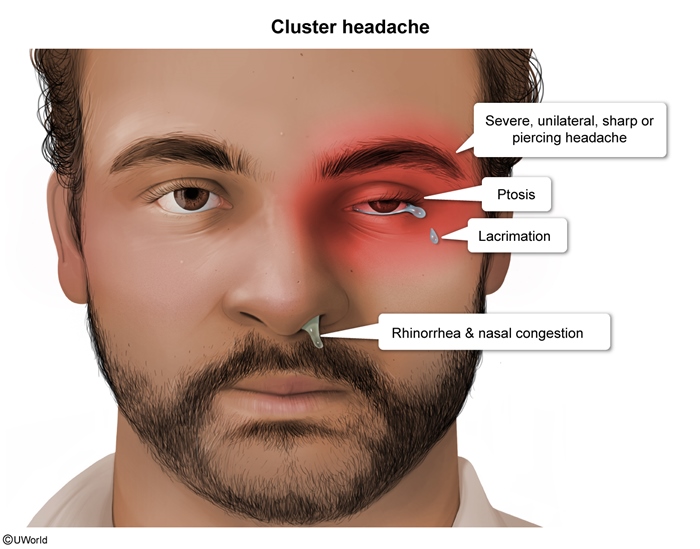Cluster Headache
Article Sections
Introduction
Cluster headaches are a severe and debilitating primary headache disorder characterized by excruciatingly intense pain and autonomic symptoms. Cluster headaches are a type of trigeminal autonomic cephalalgias, which are headache disorders characterized by short headaches in the trigeminal distribution with ipsilateral autonomic symptoms.
Epidemiology and risk factors
Cluster headaches primarily occur in patients age 20-50 but occasionally present in childhood and adolescence. Males are 2-3 times more likely to have cluster headaches than females. Some patients may have a genetic predisposition (a family history of headache). Smoking is considered a significant risk factor for the development of cluster headaches.
Pathophysiology
The exact pathophysiology of cluster headaches is not completely understood. The pain is likely caused by the activation of trigeminal nociceptors and the autonomic nervous system. The regular, predictable clustering of attacks suggests involvement of the hypothalamus, which regulates circadian rhythms.
Continue Learning with UWorld
Get the full Cluster Headache article plus rich visuals, real-world cases, and in-depth insights from medical experts, all available through the UWorld Medical Library.
Figures
